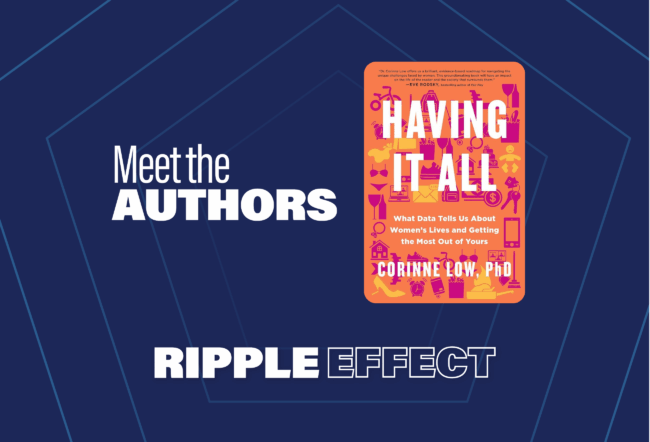It’s been one year since a Supreme Court ruling ended race-based admissions at colleges and universities, and many schools are still figuring out how to attract diverse students without using recruitment programs that target specific groups.
“With all the problems that universities have, they don’t want to be the next one to have a lawsuit,” said Kenneth Shropshire, Wharton emeritus professor of legal studies and business ethics, during an interview with Wharton Business Daily.
Affirmative action was established by the landmark Bakke decision in 1978 and withstood numerous challenges in the 45 years since, Shropshire said. “Until the one we faced last year that finally said, ‘No, these programs are not allowed and you must move away from these special efforts in terms of admissions.’”
Shropshire said if there is any silver lining in the court’s opinion, it’s that colleges and universities that are committed to diversity must “cast a wider net” and abandon “the rifle-shot focus” of targeting specific groups. In redesigning diversity recruitment, schools must reach out to even more communities.
For Shropshire, the ruling also makes clear the consequence of elections. The court’s decision fell on ideological lines, with the six conservative justices voting in a supermajority to lock in the opinion.
“What this generation now knows is the composition of the Supreme Court makes an extraordinary difference,” he said. “We’ve seen this in terms of freedom of choice, in terms of so many different areas, based on the justices on the court. So, this makes the election a very important thing.”
An edited transcript of the complete conversation appears below.
Transcript
Dan Loney: We are one year out from the decision by the Supreme Court that ended race-based decisions around admissions at colleges and universities. What kind of impact has that decision had?
It's great to be joined by Ken Shropshire, senior adviser to Wharton School Dean Erika James as well as professor emeritus of legal studies and business ethics. Ken, what are you noticing in terms of the impact on admissions, either at Penn, at Wharton, or what you hear from other universities?
Kenneth Shropshire: So far, it has impacted more of the activity in terms of recruitment, in terms of specific programs for specific racial groups. It's straightly in line with the decision. I think what we see, with all the problems that universities have, is they don't want to be the next one to have a lawsuit. What they're trying to figure out is how do we continue to have the efforts focused on having a student population that adds to the great value a classroom can present, without violating the law, without becoming the next defendant in a lawsuit?
We're still seeing the trickle-in of what really happens in the end, but it seems that most of the harm is in the efforts that are overt or have historically been overt to bring in the various racial groups.
Loney: Is that having an impact on universities and how they're thinking about the entire admissions process?
Shropshire: That's right. Think about the programs that have been in place for decades, since the Bakke decision back in the '70s that said basically, "Diversity is important, so you may recruit, and you may take forth special efforts to make sure that your class that is admitted… whatever it takes to have a diverse class is OK." That was amplified in new Supreme Court decisions, up until the one we faced last year that finally said, "No, these programs are not allowed, and you must move away from these special efforts in terms of admissions."
Now, you can make a narrow interpretation. You can say that the focus is on the idea of more of a recruitment effort, more of the activities that take place to have a special focus, but be as broad as you want to be, and if you incorporate broader racial groups, that's probably what should be done anyway.
We're seeing this come to bear. You know, all these things are short-term, and we'll see what comes to bear over the next couple of cycles.
Loney: I think it's a little ironic that we have this going on, yet when you talk about the business world, there's so much conversation about how the value of diverse voices in the workplace is such a benefit to a company. If we can have that discussion and that movement forward in the office, why is there such the back-fighting around the education system?
Shropshire: If we give the actors the benefit of the doubt, I think it is from just not being on the ground and not understanding what happens in the classroom and what's valuable. As someone who has been a professor since the mid-'80s, the idea of having a classroom that has different voices, different insights, people from different backgrounds as broadly as possible, versus a classroom that's much more homogeneous and doesn't bring these different ideas, doesn't allow for the level of engagement -- that's something that maybe people don't understand, who have brought forth these efforts, of what the value is.
Now business, they have had many bottom line-type studies that say, "This is the value of diversity for our business. This is the value of having different ideas." Even though we've seen business react to this opinion in some ways, many still move forward, as we anticipated they would, because the case that the Supreme Court specifically focused on was college admissions.
Loney: How do we try to continue to deal with the issue of inequality in education?
Shropshire: I think if there's any silver lining, and it's hard to even call it that from the opinion, it is the idea of casting the broader net. It is making sure that you're reaching all communities, without the specific rifle-shot focus that had the specific labels that said, "We are going after the Black community or the Latino community” or whatever it may have been in the moment. But our job as admissions officers is to cast our net as broadly as possible, to make sure we do incorporate people that may not have heard about these opportunities or may not understand the opportunities that exist.
Loney: Had that net really not been cast as wide as it could have been? What do you think was going on there for a while? Why is this decision being looked at so closely?
Shropshire: I don't think it was problematic in the way that it was done. That's my personal opinion. But understanding the adjustment that the court mandated, that's the alternative, to think about this is the broader way, rather than the rifle-shot sort of way. And possibly include people who weren't included in the way that the rifle-shot admissions techniques were achieving. We'll see. Again, these programs, these processes had become deeply embedded, so now we're unwinding and figuring out how do we do this with the new guidelines of the law as presented to us.
Loney: How much do you think universities and colleges will be changing in the years ahead?
Shropshire: It's the one thing I think about and the one thing that I caution people about. This court opinion took 50 years for this change to come about -- 40 or 50 years. That does imply that there may be a change again at some point in the future. So, maybe finally embedded in the admissions process is a greater sense of agility and a greater sense of being responsive where there's a need to be responsive. But if your bottom line goal is that it is important to have diversity in the classroom, it is important to have diversity on the campus overall. But we are told we can't do that in the admissions process. The alternative is to cast that wider net and make sure that you incorporate everyone, and that in that process, you bring in the broad base of people.
Loney: In the time that you have taught, what have you seen at the ground level in terms of diversity? In the classroom, and the conversations you have with students, both here at Wharton, and you spent time at Arizona State, what did you see on the ground level?
Shropshire: I'll go back even further in a different kind of way. When I was admitted to Stanford University in the early 1970s, the students who were admitted at that point -- the African American students, specifically -- were largely from inner-city schools and public schools. While I was there, I would say in the mid-'70s, there was this transition to finding more African American students who were from private schools, that had gone to boarding schools and the like. Even within that, there was a question about the type of diversity that was brought in, so the socioeconomic question comes into play.
Different universities have different constituencies, for sure. I certainly saw a different type of student at Penn than I did at Arizona State University, which was much less diverse in terms of different classifications -- much fewer in terms of percentage of African Americans, greater in terms of Latinos, and greater numbers of Native Americans.
The schools varied quite a bit, and the evolution of who was admitted. And think about it, too. One of our great professors here, Camille Charles, studies the issue of the type of Black students that are admitted largely are more immigrant descendants, as opposed to descendants of American slavery.
Loney: Since you mentioned socioeconomics and that impact, how has that factored into the ruling and where we are headed with our education system? I think there is a concern that the people who have the wealth have the advantage over those who maybe don't have the advantage, and that can lead to certain students being left out in the cold at times.
Shropshire: Right, and that's the beauty of the word "diversity" that has been so problematic. We have to think about it as broadly as possible. Certainly, we can't just go based on what somebody looks like. We also would love to have greater diversity based on socioeconomic background, without a care for what your racial, religious, or other identity is. Are we making sure that everyone who has the ability has the opportunity? This for me has become the watchword in this whole moment, that we've got to maintain this idea of providing opportunity for young people who may not have had the opportunity otherwise to have this great stepping stone to this adventure in life.
I was blessed to be from a strong middle-class family, but had I not had the educational opportunity that I had, I wouldn't have the opportunities that I have now. I can clearly see the difference on where I would be if I had not been at one of these great institutions at that point in my life.
Loney: But there is an argument to be made that the original decision that was in there for several decades did have a benefit. It did show a value, a strength, to adding to the mix at universities.
Shropshire: For sure, and it was a decision that was maintained for years, that this idea that we've got to make sure that our student body remains diverse. What overrode that is this idea that somehow there was discrimination taking place against others by trying to bring about a diverse school population, which is absurd in itself. Unfortunately in our society, it has not happened naturally, and we're not at a point where it's happening naturally.
An earlier Supreme Court decision had this 25-year kind of guideline in there saying, "By then, we should be through with all of this." But we're not through with all of this. The problems still sustain themselves.
Loney: I guess it is going to be interesting, whether or not there is another turn in this race on this topic of diversity and inequality and where this goes in the future around the education system.
Shropshire: What this generation now knows, clearer than many have seen, is that the composition of the Supreme Court makes an extraordinary difference. We have seen this in terms of freedom of choice, in terms of so many different areas, based on the justices on the court who sit there and which way they are likely to vote. So, this makes the election very important in terms of who the new president will appoint to that court that will ultimately make these kinds of decisions.



